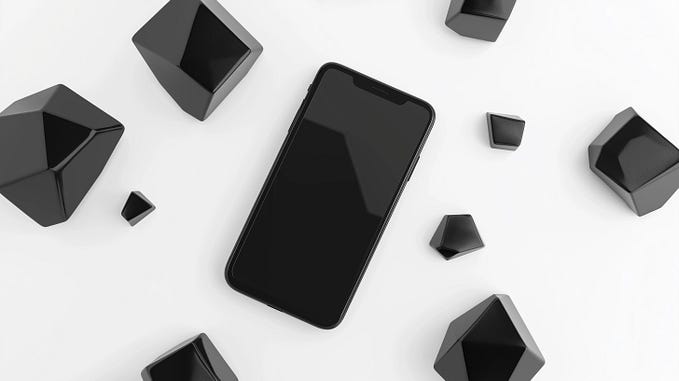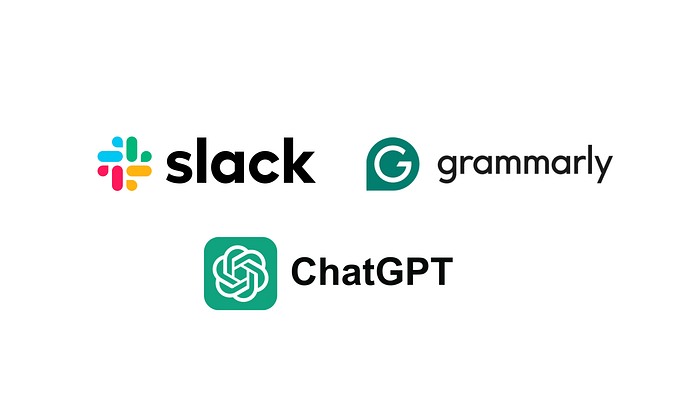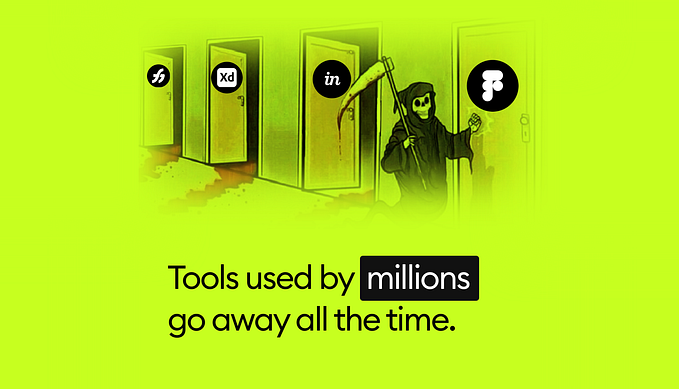Designing with intention: No one cares about your opinion
How to support your team so they design with intention.

Every piece of software, system or service is designed; just not always by someone trained in how to map that creation to an intended outcome. Sometimes those services are designed intentionally and sometimes accidentally. When organizations are making a shift toward intentional, outcomes-based design, it’s a good time to set some ground rules on what to do with all those opinions that were so heavily used before, even by fellow designers. Let’s break it down so we can support designers in this change and celebrate when it starts happening.
Note: for this article, I’m ignoring the aspect of design called “taste” which is a huge part of certain design activities, but is not core to functional design. Even taste is not purely opinion-based, but it’s more complex and requires more layers than this article covers.
Defending a design is not a burden, it’s foundational
One misconception I’ve seen is that intentional design can be achieved by using the opinion of trained designers. Big ol’ red flag! Designers’ opinions are just opinions, too, and in a company, the hierarchy is going to matter if you are only choosing between opinions. One of the most important skills a designer can develop is knowing and explaining WHY something is designed as it is. I’ve heard designers’ frustration when they are asked to “defend” their work, but this misses the point of functional design. If we do not have a reason for the design choice, then it is simply one opinion of many.
Years of experience certainly contribute to how one gets to a successful design faster, but what’s happening is that the designer is using their experience to get to the WHY faster, which leads to a more accurate initial output. Less experienced designers may simply be wrong more often than experienced designers, and that is a part of learning and developing. Design managers can coach designers who have a reason for their design choices but happen to be wrong in some way, such as misunderstanding or over-using a user type, business goal, industry standard, or usability heuristic. But if designers do not activate the task of expressing why each design choice is made, then it’s much harder to coach.
Critique using the right questions
I’ve written about the necessity of problem statements for good design. A fundamental step to explaining why something is designed as it is, is to be able to express what problem the design solves. Once that’s a part of the process, design critique is an ideal venue to identify where this is strong versus lacking, and coach on developing the skill. Critique is not a time to just get more brains on something; if designers want some ideation help, great, but that’s not critique.
To get intentional design from your team, be intentional in how critique happens.
Offer well-structured QUESTIONS in critique, and require it of all who offer feedback (designers and others). My general guidance is that questions should start with either (1) “Tell me more about your decision to [something about the design]?” or (2) “How might we [something about the user problem]?”
“Tell me more about your decision to” questions offer the critic a chance to identify that something about the design is either unclear or unexpected. This allows the conversation to proceed to the reason for the design choice, which is where the good stuff happens. A designer using intentional design will be able to offer the reason, and that grounds the conversation. A designer who needs support may say “hrm, I don’t have a strong reason for that, and I need some help thinking through this.” A designer may also be working with intention but need a course correction on the appropriate application of the choices. For example:
Q to designer: “Tell me more about your choice to put that banner at the top of the page?”
Reasonable answer from a designer who is mistakenly misusing a core principle: “Because we know this is the most important information for the user.”
Coach: “Ah, I see what you were thinking. However, we’ve got to keep usability in mind as well, and you showed us a prerequisite step that is now lower on the page. This means the user will have to backtrack. So, let’s find a way to still draw plenty of attention to that important information but remove the backtracking.”
The next iteration of the design is going to be stronger when they account for both considerations, and that designer can now easily explain to anyone else why the banner is situated that way. Had the coach just offered a directive to move the banner lower on the page, the designer would not be able to articulate the design decision (potentially leading to churn when a stakeholder requests it be moved back to the top), nor would the coach have the additional insight about the customer’s priorities. As Tom Greever’s book offers: “One of the best ways to make a case for your designs is to directly connect it to the needs of the business.” Check out his book to go deeper on ways of modeling or characterizing your reasons.
Look for signs that designers need help: if the answer to ‘why’ has nothing to do with the customer, technology, or busines (such as “because it feels right” or “because I am a modernist designer” or “because I like things simple”), they need help. None of these serve as reasons why a design choice was made; they are just statements that infer an opinion about the outcome of the design, without validation or connection to the problem being solved. It’s important to coach designers on the difference between reason and opinion so they can keep building on measurable success.
“How might we” questions offers the critic a way to call attention to a part of the problem is not addressed or that the design has created a new problem to solve. Using the same example above, someone could have asked: “How might we still give attention to that banner but let the user move from top to bottom without having to backtrack?” Notice the question considers the user’s situation and needs, and does not assert something is wrong with the design. A BAD question would be something like “how might we move that banner down the page more?” That’s just an opinion expressed Jeopardy-style. Design leaders should nip those and ask critics to offer a different question for critique.
Stakeholder opinions
In the best-case scenario, stakeholders and partners of designers are also experts in their customers’ needs. Even in this situation, opinions should not be used directly. Design leaders can help an entire organization by actively listening to stakeholders and offering a translation into questions. Pro tip: always verify that they agree your question is an accurate reflection of their thoughts. Example:
Stakeholder: I’d like to see that banner moved to the top — that will be better.
Designer: I agree that we believe this information is what’s most important to customers — is that where you are coming from?
Designer: This design also accounts for the fact that we require them to give us some data inputs first, so I need that to come first in the flow. But here’s what I hear you saying: “How might we either remove the need for that data entry, or draw more attention to the banner?” Is that right?
Here the two parties can align on the intention and have a conversation about where the challenge is — now, rather than a binary choice, we can get problem-solve the issue. Can we find a way to remove the need for data entry before the banner? Perhaps that was not considered before, but now we see the consequence of that choice. In fact, this same method can be used when teaching a design team how to change old habits in critique to this questioning method — help each other formulate the question before the presenting designer responds. It’s harder to offer a well-structured question, but designers and customers are worth the effort! 🖤
So if we design with intention, we’ll have a killer product, right?
Well, no. Intentional design starts to happen when design choices can be questioned and explained fluidly. However, that will not ensure success. Those intentions must be mapped to outcomes. In the example we’ve used, there is an assumption that if the user has that important information, some success will occur. Perhaps they will complete a task, or be satisfied in some way. The conversation about the design of the page is meaningless if that outcome is inaccurate. Working with users directly before and during design is the only way to know if the designs are properly mapped to outcomes, and measuring results when it’s in the wild will be the final answer. McKinsey has a great overview of the process to map value to CX, and HBR recently published about moving from customer journey “touchpoints” to “need points”, getting right to the heart of things.
But, it is definitely time to start storytelling!
Once your team starts designing with intention, you can start storytelling! Explaining to a stakeholder or a customer how something works is useful. But explaining WHY it was crafted like this — just for them — is meaningful. Design leaders: when your designers start crafting with intention and can explain it, give them a mic! Put them in the spotlight internally and externally and let their passion come through with a great story (learn more from Jesse Weaver about storytelling and showing up for the moment). It’s a moment to be proud of, and reinforces the fact that they own their choices. It’s also a jumping-off point for that designer to get direct input from customers for how that thing might evolve in the future. 🎉
You’ve got this
- Acknowledge the opportunity that defending design creates + know your customer problems first.
- Structure critique in question form to focus on the reason for the design choices, not opinions of the group.
- Translate opinions into questions when working with stakeholders, and get alignment.
- Put designers in the spotlight when they can describe the design intention — celebrate it!
— -
Editor’s note: I changed the “Tell me more” question from a previous version that asked “Why did you..” after several helpful comments that “why” questions can be provoking. I get that — hopefully this is more useful!









